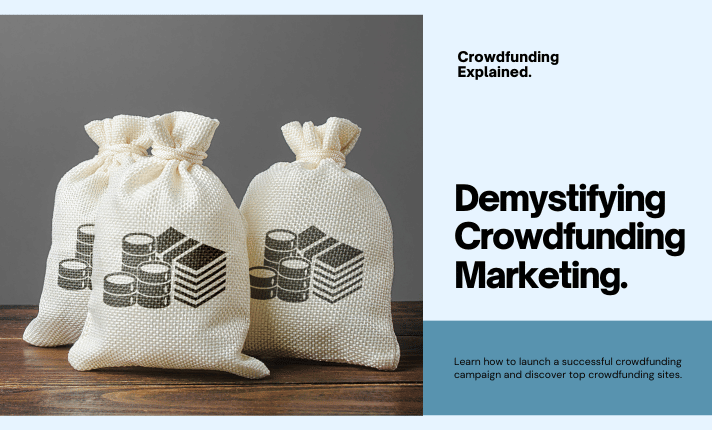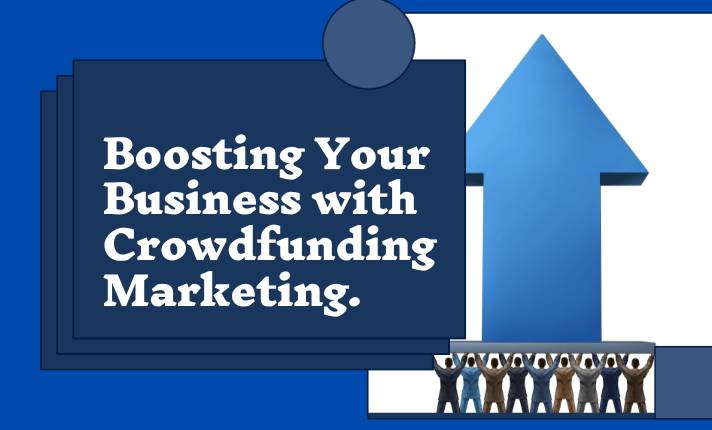Intro
All small business owners, take note! Are you trying to find a way to get money for your creative projects and ideas? Go no further than Kickstarter, the best platform for entrepreneurs to raise funds through crowdsourcing. Your small business can reach a larger audience and raise the money needed to realise your vision with the help of Kickstarter marketing. In the business world, crowdfunding marketing has changed the game by giving small businesses a rare chance to engage with potential clients and investors. This blog post will discuss why Kickstarter is the ideal platform for small businesses to succeed in crowdfunding and how small businesses and the platform make a perfect match. Prepare to unleash your company’s full potential with Kickstarter marketing and grow your small business to unprecedented heights of achievement.
What Exactly is Kickstarter?
Founded in 2009, Kickstarter is a cutting-edge platform for crowdsourcing ideas to realise artistic projects. With the help of this platform, artists, designers, musicians, filmmakers, and even small business owners can showcase their projects to the public in the hopes of receiving funding. Kickstarter uses an all-or-nothing business model, meaning money is only transferred if the project can raise the necessary funds. By doing this, backers and creators can reduce risk and ensure that projects have enough funding to be completed. Small businesses can use Kickstarter to share their ideas, get support, and raise the money they need to realise their ideas. Nor is this solely a financial matter. It’s also about getting your ideas validated, getting noticed, and creating a community around your company. Kickstarter provides small business owners an exceptional venue to exhibit their creativity and enthusiasm and establish connections with like-minded individuals.
Harnessing the Power of the Crowd
Leveraging the crowd’s collective effort is one of the fundamental components of crowdfunding. Kickstarter marketing uses this idea by giving companies a stage to showcase their creative concepts and encourage others to back them. You can pique the interest of your audience and persuade them to become backers by telling a gripping story, providing excellent visuals, and providing frequent updates. Furthermore, supporters do more than provide financial support; they also act as brand ambassadors. By disseminating your campaign among their networks, they expand your audience and boost your chances of success. Kickstarter serves as a platform for pre-sale, marketing, idea validation, and a tool for raising money. When used correctly, it can be a potent growth engine for your small business. Remember that the audience is not only your source of funding but also your community, sounding board, and possibly your most devoted clientele. Hence, it is imperative to maintain their engagement, attentively consider their input, and generate enthusiasm for your endeavour, as their backing will propel it towards triumph.
Success Stories of Small Businesses on Kickstarter
An essential factor in the success of many small businesses has been Kickstarter. For instance, the Kickstarter campaign for the Pebble Time smartwatch raised over $20 million, making it one of the most successful in the platform’s history. The tale of the Coolest Cooler, a cooler with speakers, a USB charger, and a blender that raised over $13 million, is equally motivational. Beyond goods, small businesses in the food and beverage sector have also significantly benefited from Kickstarter. The success of BrewDog, a small Scottish brewery that used a Kickstarter campaign to raise £7 million for expansion, is an example. These tales demonstrate Kickstarter’sKickstarter’s potential as a funding source and its effectiveness as a potent marketing tool. They show that small businesses can accomplish amazing things with a great idea, a successful campaign plan, and the community behind them on Kickstarter. Will your company be the subsequent big success on Kickstarter, then?
Making Your Kickstarter Campaign Stand Out
A compelling pitch is the first step in crafting a Kickstarter campaign that stands out. Create an engaging narrative, explaining to backers why your project is essential and how it will help them. To visually engage potential backers, take the time to create a high-quality video and visually appealing images. To encourage quick pledges, make your rewards attractive and consider providing early bird specials. Remember to plan your launch schedule, taking into account things like pay cycles and holidays. Lastly, it’s critical to communicate actively. Provide your backers with regular updates on the status of your project and swift answers to their questions. Genuine interaction builds trust and turns supporters into brand ambassadors who will promote your initiative. Using these techniques, your Kickstarter campaign will bring in money and build enduring bonds with your backers.
Understanding Kickstarter’sKickstarter’s Fees and Funding Model
Kickstarter uses an all-or-nothing funding model. That implies that money is only transferred if a project can capture the necessary funds within the allotted time frame. This framework helps to establish credibility with possible backers and pushes creators to set reasonable funding targets. Kickstarter charges 5% of the total amount raised after your project meets its objective. In addition, payment processing fees are subtracted from the funds collected prior to their transfer to you. These fees typically fall within the range of 3% to 5%. These charges pay for the platform’s upkeep and transaction processing. Even though these expenses can mount up, remember that Kickstarter offers a robust platform for expanding your small business’s reach, getting your project noticed, and reaching a big audience. To ensure your funding target sufficiently covers your project’s expenses and the fees you’ll incur from successfully raising your funds, it’s critical to account for these costs in your campaign’s budget.
Alternatives to Kickstarter: Exploring Other Crowdfunding Options
Although Kickstarter is the industry leader in crowdfunding, other competitors are also. Alternative crowdfunding sites such as Indiegogo, GoFundMe, and Patreon are good choices for entrepreneurs looking for alternatives. Like Kickstarter, Indiegogo is a fantastic platform for imaginative and creative projects. Still, it also provides a flexible funding model that allows you to keep the money raised even if the goal isn’t reached. On the other hand, GoFundMe is an excellent option for nonprofit fundraising and individual causes. Patreon allows fans to regularly support creators creating ongoing content, such as podcasts or comics, in exchange for exclusive content or experiences. When selecting the best platform for your campaign, keep in mind that each of these options has advantages and unique qualities of its own. You should also consider your project’s requirements and your target audience’s preferences. Remember that the crowdfunding platform you select can significantly impact the campaign’s success and the expansion of your small business.











